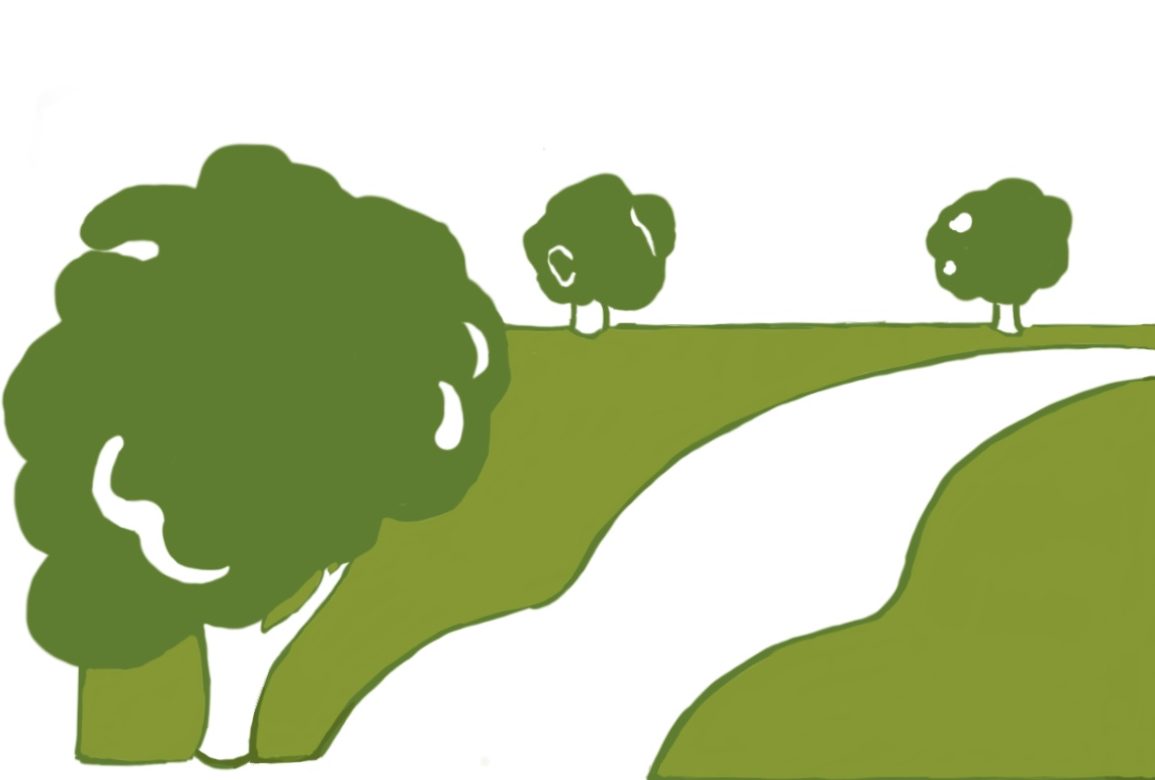There are several reasons for planting trees, some mutually incompatible. In past centuries woods were established primarily for sporting purposes, hunting and shooting, which is why we have so many small farm woodlands. These mixed species woods with glades and rides are also good for wildlife, another reason for planting. Then there are forests established for timber, for furniture, construction, fencing, pallets and fire wood. Here the density needs to be greater to ensure tall straight growth with fewer side branches. Whilst hardwoods are planted, the majority is conifer because it is quicker growing. Much of the expansion of forest established by the Forestry Commission over the past century has been of Sitka spruce, but a dense plantation of conifer for timber production provides very little habitat for wildlife.
But the main emphasis for tree planting now comes from the ability to sequester carbon and thus aid in the fight against climate change. The Government’s target is to plant 30,000 hectares in England a year every year to 2050 which would take the UK tree cover to 17% from the current 13%. Others go much further; a House of Commons briefing paper suggests 30,000 ha a year by 2024 rising to 50,000 ha by 2050. The Woodland Trust has planted 50 million trees since 1972 and aims to plant the same number over the next five years. Friends of the Earth argues that UK tree cover should be doubled to 26% by 2045.
And yet these targets appear totally unrealistic. In England only 7,220 ha were planted between 2016 and 2020 whilst, in 2019/20, 2,330 ha were planted, 2,100 broadleaved and 230 conifer. In the same year, 10,860 ha were planted in Scotland, 200 ha in Northern Ireland and 80 ha in Wales. The majority of public funding comes from grants in the Countryside Stewardship Scheme which has been roundly condemned as not fit for purpose since it replaced the Environmental Stewardship Scheme in 2014. The process is overly bureaucratic and the grants inadequate. Efforts have been made to make administration simpler and there are now sharp rises in the rates of grants but it remains to be seen whether this proves more attractive.
There are a number of challenges threatening the targets, not just the lack of incentive. The haste with which it is planned to implement them is likely to lead to mistakes and unintended consequences. All are agreed that the right species must be planted on the right soils but it is not entirely clear what or where those are. Planting trees on peat soils is counterproductive as the growth dries out the peat giving off more carbon than is being captured. And yet vast areas of the Flow Country and elsewhere is Scotland were planted in the 1960s, 70s and 80s. Eventually the mistake was realised and, when the trees matured and were harvested, the previous land use was restored, heather moorland in particular.

Another example is much more recent. A dairy farmer in Cumbria sells his milk to Nestle which offers grants to farmers for tree planting. An area of the farm was identified and the proposal approved by the relevant authorities. Once the saplings had been planted, a conservationist with Wild Lakeland realised that this had taken place on a wildflower meadow that contained rare Greater Butterfly orchids. The saplings were removed to be planted elsewhere and it is hoped the wild flowers will recover.
Where are all these saplings to come from? Nurseries in this country have nothing like the capacity required and will take years to increase production sufficiently. As in so many other sectors, a shortage of labour is a serious problem threatening existing activity let alone expansion. But importing plants from nurseries abroad carries major risk and strict biosecurity rules were introduced in 2019 in an attempt to prevent the spread of disease. Chalara or ash die back is caused by a fungus that originated in East Asia. It came into Europe around thirty years ago causing huge damage to the European ash. It was first identified in this country in 2012 in a nursery in Buckinghamshire that had imported ash saplings from a nursery in Holland. It is estimated that the disease may eventually cause the death of 80% to 95% of all ash trees in this country.
Planting trees is not an end in itself. If they are to thrive and achieve the objective of capturing carbon, they must be nurtured and managed. In particular, deer, squirrels and rabbits need to be controlled and unwanted competition removed. There are grants for managing woodland and the planting grants can be recovered if appropriate management does not take place, but there needs to be the infrastructure in place for it to happen.
Has the felling of millions of ash trees and the natural harvest of many others been taken into account in the targets for woodland cover? The premise on which this campaign is based, that planting millions of trees is essential to reach net zero by 2050, is open to challenge. There are other ways to sequester carbon into our soils, as shown by the Cholderton Estate covered in this column before Christmas. It is easy for campaigners to claim that we should cut down on red meat and dairy consumption and then plant all the redundant grassland with trees, but that is far too simplistic a view and one with major implications for our landscape. Of course we should plant more trees and increase the UK’s woodland cover, but let us do it in a considered way that avoids unintended consequences and in conjunction with other measures to reduce greenhouse gas emissions.

